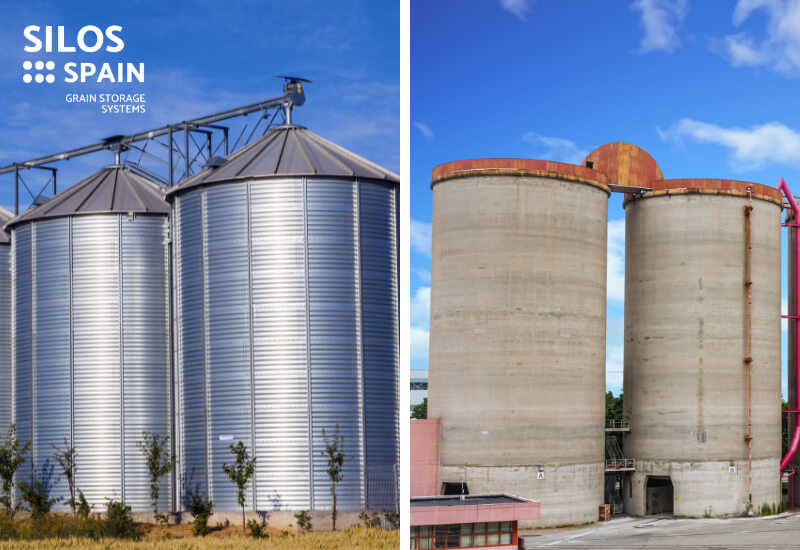Grain storage is a critical aspect of the agricultural industry, and selecting the appropriate storage method can significantly impact the efficiency and cost-effectiveness of operations.
Among the various storage options available, steel silos, concrete silos, storage warehouses and bag silos are the most popular choices.
In this article, we will delve into the key differences between steel silos and concrete silos and shed light on why steel silos offer several advantages over their concrete counterparts.
Production Process
One of the primary advantages of steel silos is the controlled manufacturing process. All steel silo components are fabricated in a factory, ensuring consistent quality. In contrast, constructing concrete silos on-site involves numerous variables, including concrete delivery and weather conditions.
Design
The design and construction of concrete silos can be complex due to the dynamic or continuous nature of the slip frame concrete process. Factors such as rebar placement and concrete quality impact the final product. Additionally, concrete silos require significant field supervision, resulting in more on-site labor, extended commissioning periods (often due to weather), and ultimately higher costs. While concrete silos can be taller than steel silos, the latter have larger diameters, resulting in greater total capacity. Concrete silos are more suitable when space is limited. Steel silos, on the other hand, are easier to erect and accommodate the installation of accessories such as doors, ladders, and samplers.
Structural Flexibility
Steel structures are inherently more flexible than concrete, which makes steel silos more resilient in the event of an earthquake. This flexibility can be a crucial factor in regions prone to seismic activity.
Optimal Cost-Efficiency: Steel Silos Maximize Your Investment
When it comes to storage capacity per dollar, steel silos undeniably offer superior value. Their cost-efficiency is primarily due to their higher storage capacity in comparison to concrete silos.
Aeration
Aeration is an essential aspect of grain storage to maintain grain quality. Steel silos offer a more straightforward and effective solution for aeration. Aeration power requirements are a non-linear function of grain depth, and it can be challenging to provide the same airflow in tall concrete silos as in shorter and wider steel silos. Greater grain depth in concrete silos also results in a higher heat of compression in the aeration system, making it more difficult to achieve the desired grain temperature during early aeration.
Foundation Requirements
Steel silos have an advantage in terms of foundation requirements. They do not demand the same level of soil firmness to support their weight as concrete silos do. This flexibility in siting steel silos can be particularly valuable in areas with soil conditions that may not meet the high load-bearing capacity needed for concrete silos.
In conclusion, the choice between steel and concrete silos should be based on the specific needs and circumstances of the storage project. While both options have their advantages and disadvantages, steel silos often emerge as the more cost-effective, flexible, and resilient choice for grain storage, offering numerous benefits that can enhance the efficiency of agricultural operations. The right choice ultimately depends on how well it aligns with your infrastructure strategy and long-term goals.


